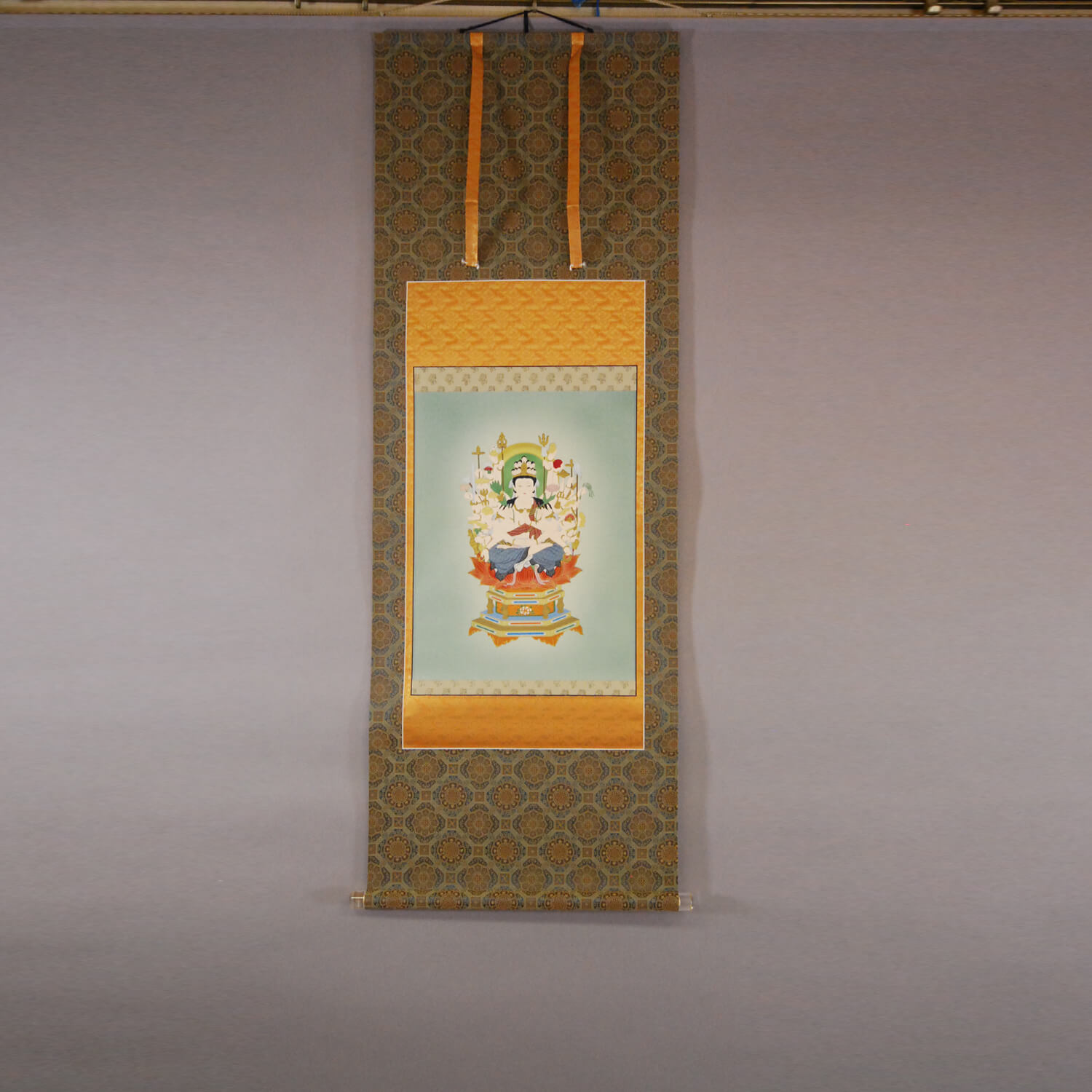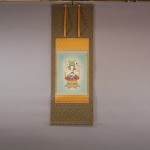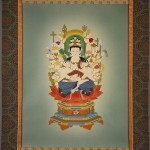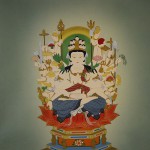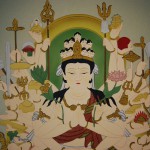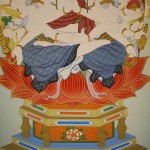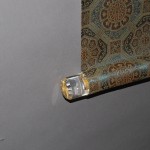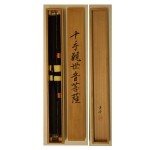Products Lineup
News / Blog
Other Menus
Kakejiku Hanging Scroll: Sahasrabhuja Aaryaavalokitezvara / Shingo Tanaka - Senju Kannon Bosatsu
- Product ID
- 0143
- Name
- Shingo Tanaka
- Profile
? –
A Japanese-style painter- Size
- 598mm x 1580mm
- Roller End Material
Crystalline acrylic resin- Material of the Work
- Silk
- Price
- JPY 120,000
- Stock Condition
- In stock
- Payment: Click the Paypal Mark
- Duty and Taxes
Import duty and taxes are beyond our control and may apply to your shipment. Please noted that these fees are the responsibility of the buyer.
- Description
“Senju Kannon,” sahasrabhuja aaryaavalokitezvara in Sanskrit, is one of “Bosatsu,” the Japanese form of “Bodhisattva”, which is worshipped in Buddhism. Sahasrabhuja literally means “a thousand arms.” This name also refers to the Hindu goddess Durga, and Senju Kannon is considered to be a transformation of Avalokiteshvara, which developed in India under the influence of Hinduism. A thousand arms indicate the vastness of Kannon’s mercy and power as Kannon endeavors to relieve the suffering of all living things. There exist both seated statues and standing statues, and generally they have 11 faces and 42 arms. The 42 arms is explained as follows; the 40 hands, except two clasped hands in prayer at the front of the breast, relieve each of the 25 worlds, that is, “25X40=1,000.” The “25 worlds” here means “three realms and twenty-five forms of existence” in Buddhism, which is a thought that there are 25 worlds from heaven to hell {it is considered that there are 14 forms in “Yokkai” (the realm of desire), 7 forms in “Shikikai” (the realm of form) and 4 forms in “Mushikikai” (the realm of non-form)}. While Senju Kannon statues are hardly ever found in India, there are remains in China in China in such places as Longmen Caves from the Tang Dynasty. In Japan, Senju Kannon began to be worshipped in an early age and it had been sculpted since the Nara period before Kūkai brought esoteric Buddhism to Japan.
This is a painting of Senju Kannon by Shingo Tanaka, a Japanese-style painter. He is well known for his Buddhist paintings, and this depiction of Senju Kannon is very elaborate. The solemn dignity of Senju Kannon is expressed very well in this work.
Kōbō Daishi Kūkai (774 – 835)
Founder of the Shingon Sect.

